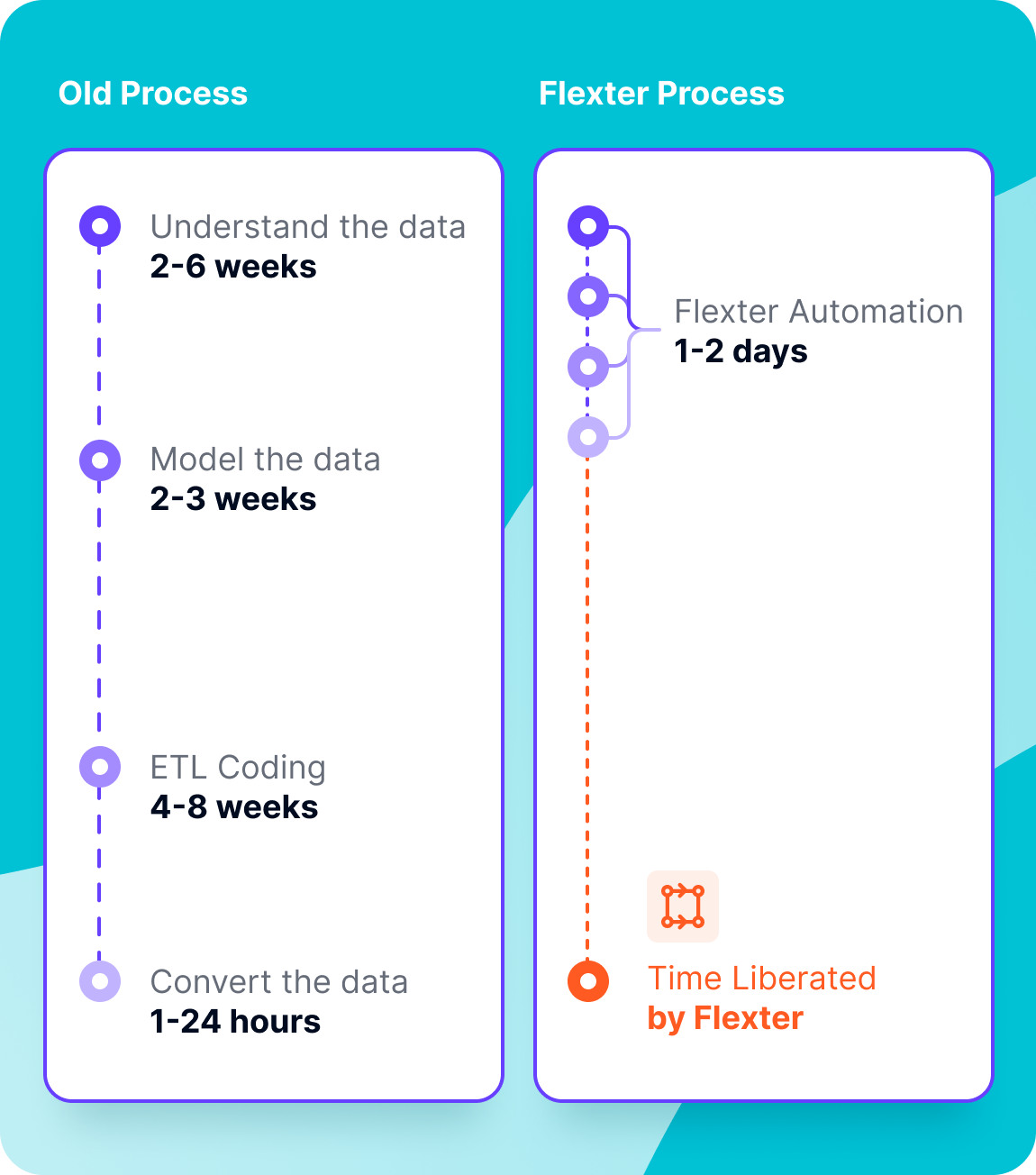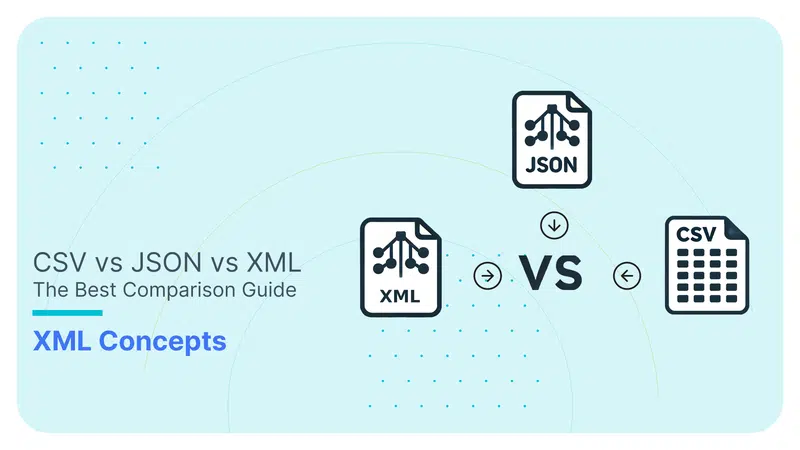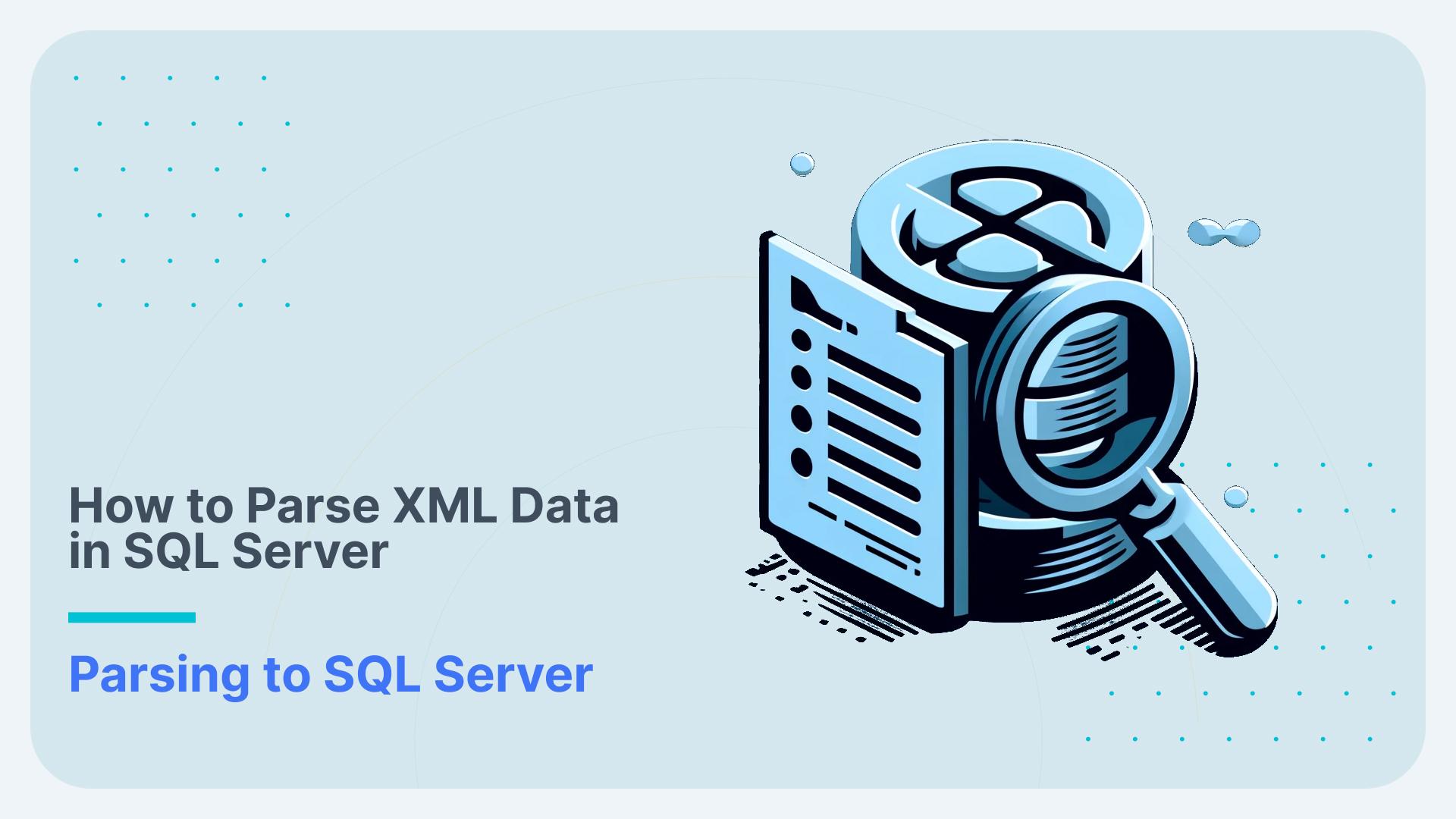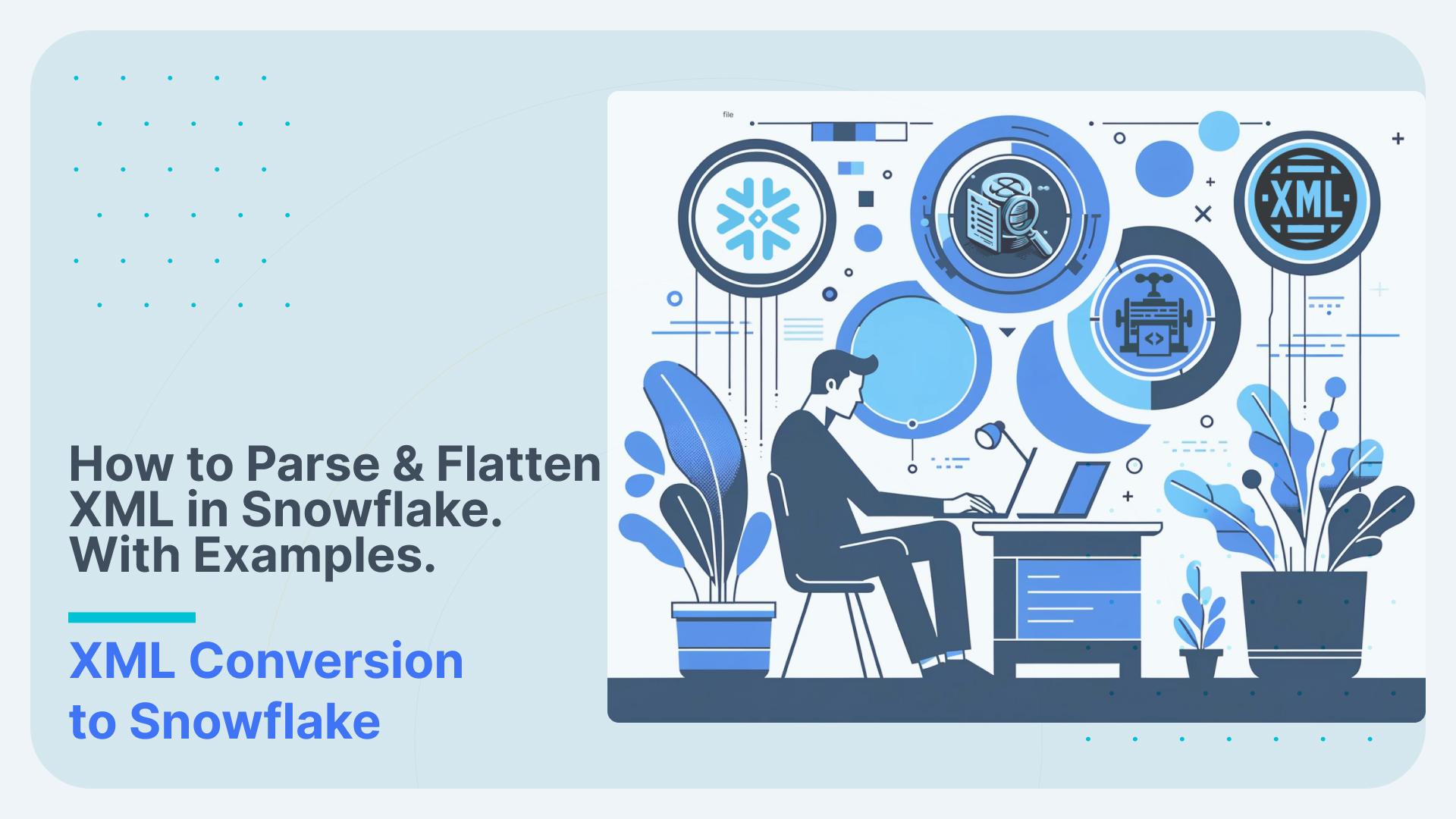Easily Convert JSON Files to Database Tables and SQL Online - Fast, Secure & Free!
100% Automation. 0% Coding
Convert JSON data into a Snowflake database (and many others with our Enterprise version). Obtain login credentials and access the database. Execute SQL queries on the converted tables.
Receive a detailed ER Data Model of the Database table structure and a source-to-target mapping file to ensure accurate data lineage







Upload your JSON
We protect your data using SSL encryption
Step 1/3
Once the conversion is complete, you'll receive an email with:
Login details to a Snowflake database: Query your converted data with SQL.
Data Structure Documentation: ER Data Model in PDF and SVG formats.
Source-to-Target Mapping: Comprehensive Excel file outlining data lineage and source to target maps for tables and columns in Snowflake Database.
ReadMe File: Step-by-step guide to handle your converted data.


100% Automation: Save time with fully automated JSON to Database and SQL conversion.
Zero Coding Required: No technical skills needed - just upload your file and receive your data.
Parent-Child Relationship Handling: Retain hierarchical JSON structures in CSV and TSV for accurate representation.
Fast processing: Get your converted data as tables in a Snowflake database in minutes.
Secure Processing: Data is encrypted with SSL for complete safety and reliability.
Scalability: Handle large, complex JSON files easily (Flexter Enterprise version available ).
Free Tool: Unlimited use with no hidden fees.
Databases provide a structured and scalable way to store and query JSON data efficiently. By converting JSON into relational tables, you can leverage SQL to perform complex queries, aggregations, and data transformations with ease. This process simplifies handling hierarchical JSON structures by mapping them into a relational format, ensuring better accessibility and performance.
With a database-driven approach, you benefit from optimised indexing, data integrity, and seamless integration with analytics and reporting tools. Using SQL, you can efficiently retrieve, manipulate, and analyze data without the limitations of flat files, making it ideal for enterprise-scale applications and data-driven decision-making.
For large-scale or complex JSON to SQL/Database requirements, Flexter Enterprise offers:
Process JSON files of any size and volume effortlessly.
Generate and map target schemas automatically.
Seamlessly embed conversion into existing workflows.
Convert JSON to databases like Snowflake, Oracle, or MySQL—or export files in formats like CSV, TSV, Parquet, and Delta Tables.
Advanced capabilities for schema evolution, data lineage, and compatibility with both cloud and on-premise systems.
Whether you're managing enterprise-level data or seeking efficient automation, Flexter Enterprise is designed to tackle even the most demanding JSON conversion projects.

"Learn about schema on read, on write, and automated JSON conversion techniques. Discover efficient methods with our comprehensive guide now.
Read More
Explore the key differences between CSV, JSON, & XML. Find out which data format is best for your project with clear examples for 2024.
Read More
Learn how to parse JSON in SQL Server using SQLJSON, XQuery, OPENROWSET, BULK INSERT & more. Explore tools, examples, and automation tips.
Read More
Learn How to Parse, Flatten, and Query JSON in Snowflake with Examples. Explore manual and automated JSON conversion techniques.
Read MoreExplore the technical capabilities of our free JSON conversion tool and Flexter to understand
your options for converting JSON data, including database and ETL integrations.
| Data | Free Flexter | Enterprise Flexter |
|---|---|---|
| Data volume | Upto 1MB | Any |
| Overwrite | ||
| Append |
| Access | Free Flexter | Enterprise Flexter |
|---|---|---|
| API | ||
| Command Line | ||
| WebUI |
| Formats (input) | Free Flexter | Enterprise Flexter |
|---|---|---|
| XML | ||
| JSON | ||
| TSV, CSV, PSV etc. | ||
| RDBMS |
| Databases (output) | Free Flexter | Enterprise Flexter |
|---|---|---|
| Snowflake | ||
| Oracle | ||
| MySQL | ||
| PostgreSQL | ||
| Teradata | ||
| Redshift | ||
| MS SQL Server | ||
| Azure SQL Data Warehouse | ||
| Yellowbrick | ||
| BigQuery | ||
| Databricks | ||
| AWS Athena |
| Query engines (output) | Free Flexter | Enterprise Flexter |
|---|---|---|
| Hive | ||
| Impala |
| File formats (output) | Free Flexter | Enterprise Flexter |
|---|---|---|
| CSV | ||
| TSV | ||
| Excel | ||
| ORC | ||
| Delta Table | ||
| Parquet | ||
| Avro |
| Automation | Free Flexter | Enterprise Flexter |
|---|---|---|
| Target schema | ||
| Mappings | ||
| Parent - child relationships | ||
| Conversion | ||
| Documentation |
| Optimisation algorithms | Free Flexter | Enterprise Flexter |
|---|---|---|
| Elevate | ||
| Reuse (XSD only) | ||
| Naming |
| Schema generation | Free Flexter | Enterprise Flexter |
|---|---|---|
| JSON sample | ||
| XML sample | ||
| XSD | ||
| XSD + XML sample | ||
| Database | ||
| Text |
| Sources | Free Flexter | Enterprise Flexter |
|---|---|---|
| FTP, SFTP | ||
| Object storage(S3, ADLS, Azure Blob etc.) | ||
| HTTP(S) | ||
| HDFS | ||
| Network drive | ||
| Local file system | ||
| Upload |
| Change intelligence and management | Free Flexter | Enterprise Flexter |
|---|---|---|
| Metadata Catalog | ||
| Schema version diff | ||
| Schema evolution | ||
| Data lineage | ||
| ER diagram |
| Platforms | Free Flexter | Enterprise Flexter |
|---|---|---|
| Virtual Machine / Server | ||
| Kubernetes | ||
| Databricks | ||
| Spark |
| Location | Free Flexter | Enterprise Flexter |
|---|---|---|
| Google Cloud (GCP)Google Cloud (GCP) | ||
| AWS | ||
| Azure | ||
| On-premise |
| Support | Free Flexter | Enterprise Flexter |
|---|---|---|
| Phone |

What is Flexter and what does it do?
Flexter is an enterprise data integration tool that specializes in automating the conversion of large and complex XML and JSON files into tabular or relational formats. This allows the data to be easily loaded into SQL databases, data lakes, and big data platforms for analysis. Flexter is designed to handle the complexities of hierarchical data, freeing up data engineers to focus on generating insights rather than data wrangling.
How does the XML & JSON to SQL conversion process work?
The conversion process with Flexter involves two main steps:
What are the key benefits of using Flexter for XML & JSON conversion?
Flexter offers several key advantages, including:
Flexter Delivers Normalised Data from Complex XML & JSON Files?
Yes, Flexter is designed to automatically generate a normalised version of XML & JSON documents. The tool specializes in converting complex, semi-structured XML & JSON documents into a structured, relational format suitable for databases and analytics platforms.
Flexter's process involves intelligently transforming the hierarchical nature of XML & JSON data into a set of normalised and interconnected tables This is a key differentiator from basic flattening tools that might produce a single, denormalised table.
.png)